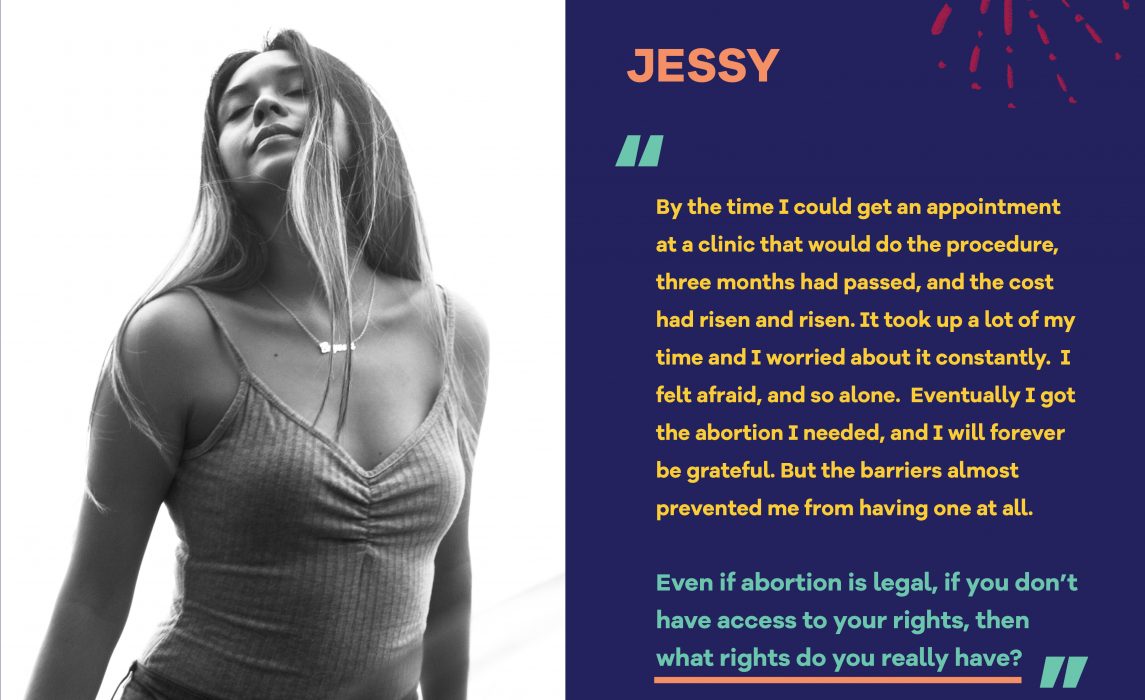Abortion Law and Policy
In 1973, the Supreme Court made abortion legal in every state with its decision in Roe v. Wade. Since then, anti-abortion activists have conducted an all-out war on abortion access in every state and at the federal level, using inaccurate information and heightened rhetoric to bolster their attacks. Under the Trump Administration, these attacks have worsened, leading to hundreds of restrictions a year, many of which are blatantly unconstitutional. All types of restrictions have a greater impact on young people because young people have lower income, less ability to travel, and often learn they are pregnant later due to irregular periods. Read on to learn more about some of the laws and policies which impact abortion care.
Parental Involvement Laws
The majority of states – thirty-six as of June 2019 – currently enforce laws that require a young person to notify or obtain consent from one or both parents before they can receive abortion care. Most young people faced with an unintended pregnancy choose to involve their parents. But for those who can’t, those who do not have access to their parents, those afraid to anger or disappoint, or who face the threat of violence in their homes—it is best for them to seek the advice of a trained medical professional than to face the situation alone and afraid. Young people are the experts of their own lives and are most equipped to decide whom they involve in their care. Research has shown that these laws, which disproportionately impact young women of color and immigrant youth, often delay or prevent young people’s access, endangering their health and safety. A majority of Americans support young people’s self-autonomy and right to make decisions about their sexual and reproductive health without their parent’s involvement.
The Hyde Amendment
When abortion was first legalized in 1973, federal funds were available to low-income women on Medicaid who sought abortions. In 1977 Congress enacted the Hyde Amendment (passed in 1976), which bans federal funding for abortion. Hyde prohibits abortion coverage in Medicaid, Indian Health Services, Medicare, Federal Employees Health Benefits Program, Peace Corp volunteers and in healthcare for military personnel. Since its enactment, Congress has been inconsistent about exception language for abortion coverage. Currently there are exceptions in the cases of rape, incest and danger to the mother’s life, but these exceptions have not always existed. The Hyde Amendment is attached as a “rider” to appropriations bills which means it has to be added every year when the government’s budget is voted on. It has prevented millions of low-income women from making their own decisions about whether to have a child, forcing some to continue with a pregnancy even when it jeopardizes their health.
Title X Rule Change
In May 2018, the Trump administration released a proposed rule that essentially dismantled Title X, the nation’s federal family planning program designed to provide affordable reproductive health services to those in need, including youth and young adults. The administration followed it with a rule that will make it impossible for patients to get preventive care at Planned Parenthood, which until now has served 41 percent of the 4 million people who have benefited from the Title X program, and establishes an abortion “gag rule” that prohibits health clinics with Title X funding from educating about, referring patients to or providing abortion care.
State-Level Restrictions
In recent years, anti-abortion activists have worked with lawmakers to make abortion increasingly inaccessible, closing in on abortion rights. Bills are introduced frequently in state legislatures that aim to create unnecessary and patronizing barriers to people seeking this legal procedure. Bans at different points in pregnancy; waiting periods; ultrasound requirements; TRAP laws which place medically unnecessary restrictions on how clinics are built and operate; race/sex selection bans; counseling requirements; and expanded funding for fake clinics which trick patients seeking abortion care and then do not provide it, are common throughout the country.
U.S. Foreign Policy
Immediately after he took office, Trump reinstated and expanded the Global Gag Rule, a policy that prevents any group which receives US funding from performing abortions or even discussing abortion with their patients. In low income countries, complications from pregnancy and childbirth, including unsafe abortion, is one of the leading causes of death for young women ages 15-19. Each year at least 2 million women undergo unsafe abortions, and tens of thousands die from them. United States policies such as the Global Gag Rule are complicit in these deaths, forcing health care providers to withhold lifesaving information and services women need to make safe and informed decisions about the size and timing of their families.
Abortion Law Around the World
Laws impacting abortion access vary widely. But placing a ban on abortion does not end abortion in that country; it just forces people to seek illegal and sometimes dangerous care outside the medical system. In countries where abortion is the most restricted, it is the most dangerous.
